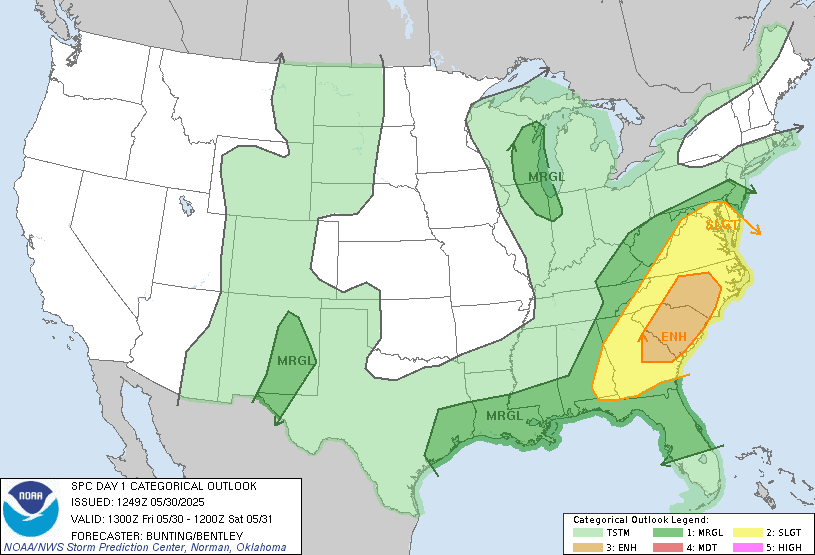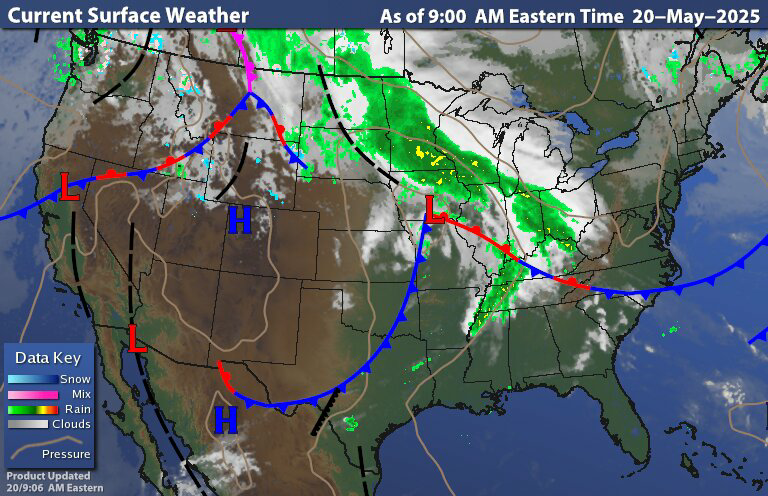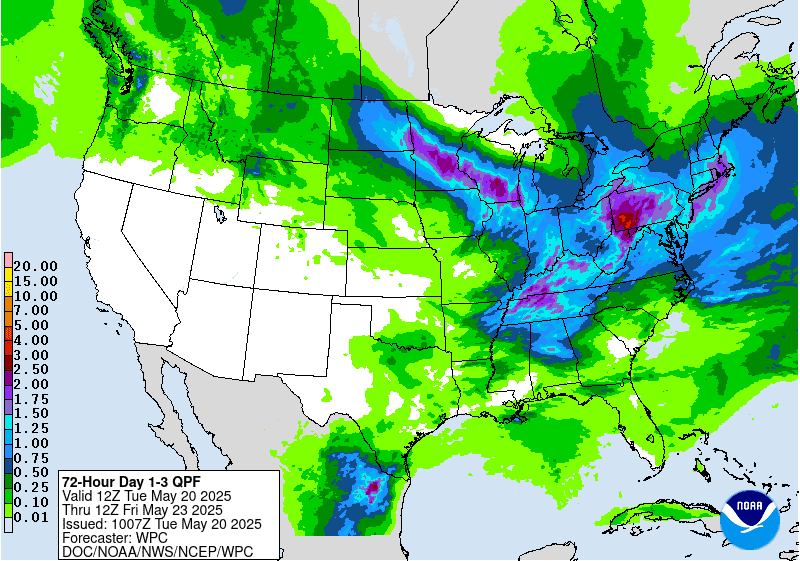Last evening the primary area of low pressure that is still sitting near the Ohio Valley into the Great Lakes started transferring energy to the coast near the Delmarvia Peninsula. Right now the coastal element Is about to take over as the primary, as the coastal low continues to rapidly intensify we're going to see the rain in the west and the rain along the coast join up and become one. Then we're going to see the rain shield pivot into the interior Northeast bringing everybody widespread rain.
The low is going to continue developing and become a fairly strong Nor'easter for this time of year. Today into tomorrow it is going to heading towards the Cape and likely over the Cape. During this time we're going to see Widespread rain and gusty winds across the region. Rain could be heavy at times, but the further away from the coast you get the lighter the rain will be. But, in the coastal plain we can expect rain to be heavy, leading to a chance for some localized flooding. Tomorrow the region is still going to see quite a bit of rain with gusty winds continuing. The upper level low and surface low will leave Cape Cod and move into the Gulf of Maine on Friday. Then over the weekend the upper level low is going to be meandering around between Nova Scotia and Maine.
By the time all of this gets into the Gulf of Maine, it is going to be weakening. As it weakens the precipitation shield is going to be shrinking and becoming more haphazard ,with precipitation rotating in around the upper level feature. So Saturday will feature scattered rain showers across the region. Then for Sunday and Monday the rain should become more isolated. So Sunday and Monday for most of us should be OK to have your outdoor activities; but you will need to keep an eye on the sky and have an umbrella handy in case you get hit by a passing light rain shower. These rain showers should last no more than 15-20 minutes. The closer you are to the upper level low the greater your chances of seeing heavier rain showers.
Today and Friday is going to be quite cool with temperature running well below average. We will start to warm up over the weekend with Saturday warming up a little bit. And then we turn milder but still below average For Sunday and Monday. Later Tuesday and Wednesday we're going to see low pressure to our south along with an approaching cold front that will reintroduce the chance for some rain showers, especially in southern parts of our region. For Thursday this cold front is going to stall over New York State And Pennsylvania keeping the weather unsettled for our Thursday.


The last couple of days have been very cold. In fact this cold looks to continue for at least the next week to 10 days; as we keep getting plagued by this upper level low pattern; as I said above, temperatures over the next couple days are gonna be running 15°F to as much as 30°F below average for this time of year. Next week we might see temperatures a bit warmer But overall this chill is gonna remain. As I said the other day, we should start to see more in the way of milder temperatures as we get into June. But before we get there we are going to see record low-highs be challenged or even broken.
Medium range pattern change
Believe it or not there is a pattern change that is going on. While the Great Lakes, Northeast into the northern Mid Atlantic are gonna be cold the rest of the US is going to be quite warm. But as I said above We're gonna have to go through this process before our region starts to warm up. The real question is this going to be a long-term persistent pattern that has the Northeast turn into a warm summer ?
Images courtesy of pivotal weather.
Looking at the upper atmosphere pattern, we can see that predominant ridge over western into central Canada. This is influencing the trough in the eastern part of the United States. As we get closer to June and into the 1st part of June there are indications, that the predominant ridge in Canada is gonna start breaking down allowing for a trough to set up over Canada. If this occurs it will encourage ridging here in the eastern United States. But the question is gonna be how prolonged this will be?
The Quasi Biennial Oscillation (QBO) is trending negative. When we have an easterly QBO We tend to see a better chance for high latitude blocking. In the equatorial pacific We're in what is called a La Nada. Which is neither El Nino or La Nina. Right now, the nino regions are a chilly neutral. In my summer and hurricane outlooks I said how I thought the ENSO could end up heading back towards La Nina this fall into the winter. But recently there are indications towards an El Nino maybe developing sometime this fall. So right now It could go either way. The Madden Julian Oscillation (MJO) has been stuck in the circle of death for the last several months; so it hasn't had a lot of influence on the global pattern. So all this means our summer pattern is going to depend on things like the QBO, Atlantic Oscillation (AO) and the North Atlantic Oscillation (NAO).
Right now I don't see a lot of super heat in the Northeast and Mid Atlantic during June. I think overall we're still going to see generally average to below average temperatures during June. Temperatures during July and August as a whole, are going to depend On the QBO and the NAO. The QBO looks like it's going to have a predominant trough in the golf of Alaska into the West Coast this summer That would place a ridge over the Plains into the Great Lakes. This would mean a general weakness over the east coast keeping things a bit unsettled. NAO If it goes negative we could see it enhance the western Atlantic ridge which could lead to some heat here For July into August, This will be especially true for the Middle Atlantic. If this happens we could have days that get very warm, maybe even hot. But this could go either way. So we could be cool for most of the summer, or we could see a few weeks of heat. We will just have to wait and see how things evolve. Right now this is just a possibility, I still think New York State And new England Is gonna see more coolness than heat over the summer. Southern and eastern Pennsylvania, Maryland, Delaware and New Jersey will have a better chance of seeing some heat this summer. As far as precipitation goes I think generally the northeast Is going to see enough rain to stave off any real drought concerns. But northern Maine could end up seeing some abnormally dry and even drought conditions as we go through the summer. The Middle Atlantic should see ample rain this summer, so they should be fairly wet during June, July and August.





































 @NWSSPC
@NWSSPC








